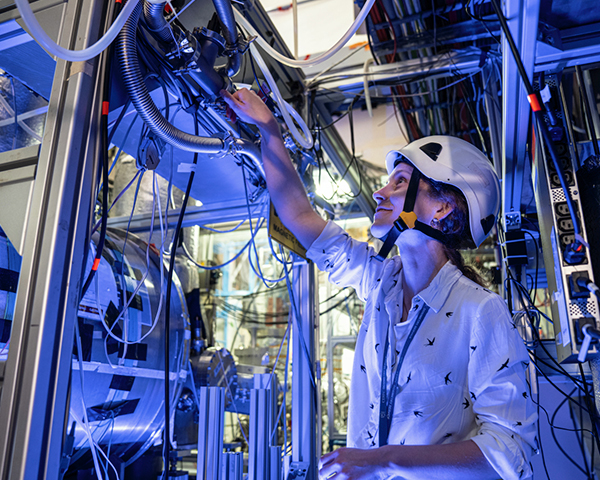
Figure 1: Barbara Latacz, a member of the BASE team at CERN, adjusting the BASE experiment's cryostat. The new device can cool an antiproton in just 8 minutes - much faster than the 15 hours the previous system took. © 2024 CERN
In a development that significantly enhances the capabilities of a long-running experiment seeking to discover why normal matter vastly outnumbers antimatter, a RIKEN-led collaboration has invented and commissioned a new cooling system that rapidly lowers the energy of trapped antiprotons1.
We're swimming in a universe of protons. A single ice cube contains a few septillion (1024) of them, while roughly half our body weight is due to protons. In contrast, antiprotons, which have the same mass as protons but opposite charge, are incredibly rare.
This overwhelming imbalance, which extends to all particles and their antimatter equivalents, is one of the biggest conundrums of modern physics-namely why today's Universe consists almost exclusively of matter, when antimatter should have been produced in equal amounts in the early Universe.
Since antiparticles can now be produced in the lab, one way to discover the cause of this imbalance is to measure the properties of antimatter particles at extremely high precisions. Physicists can then test whether there is even the tiniest difference in the properties of matter and antimatter pairs that might have led to the gradual attrition of antimatter over cosmic timescales.
This is the goal of RIKEN researchers and collaborators at the Baryon Antibaryon Symmetry Experiment (BASE), located at the world's only operating source of cooled antiprotons-the Antiproton Decelerator at CERN on the French-Swiss border. But so far, no such asymmetry between protons and antiprotons has been detected at the resolution limits of the experimental system.
Stefan Ulmer, who heads the RIKEN Ulmer Fundamental Symmetries Laboratory, is leading the BASE research collaboration to significantly improve the measurement resolutions of various properties of antiprotons by cooling trapped particles more rapidly.
"The BASE experiment consists of four Penning traps that trap single charged particles using a combination of static magnetic and electric fields," explains Ulmer. "These traps allow us to observe single particles for years at a time, enabling us to achieve very high accuracy and conduct studies at the highest resolution."
This measurement resolution is limited by the antiproton's temperature-the cooler the antiproton, the smaller its oscillation amplitude and the less sensitive it is to external noise sources, enabling researchers to learn more about its fundamental properties.
That is the motivation behind the sophisticated new cooling system developed by Ulmer's team.
"Our resistive cooling system uses a magnetic bottle to select very cold particles efficiently," says Ulmer. "It's a technically complex system, consisting of several ultrasensitive superconducting detectors and other devices, that shuttles antiprotons between the two traps without heating."
The new cooling system substantially improves the data sampling rate. This, in turn, should considerably improve the accuracy of measured fundamental constants, increasing the likelihood of spotting miniscule differences between protons and antiprotons.






